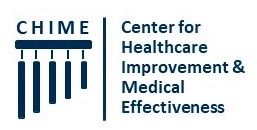Implementation Science Mini-Course
This self-directed, online mini-course provides a brief introduction to the field of implementation science through short video lectures, readings, and case studies. These materials provide high-level insight into what implementation science is and briefly introduce a few frameworks commonly used in the field.
These frameworks and additional topics are covered in depth through the UCSF Implementation Science Training Program, which offers in-person and online training in implementation science, with an emphasis on applied instruction for researchers as well as practitioners.
Instructors
I. Foundational Work for Implementation Science: Building the Case for Evidence Translation
Objectives
- Define implementation science
- Decide and justify whether a health care intervention has sufficient evidence to be translated/disseminated into practice, policy, or public health
- Identify strategies and activities for engaging key stakeholders in the translation/dissemination of your evidence
Lecture Videos
- Introduction to Implementation Science: Defining implementation science, Adithya Cattamanchi, MD, MAS
- Introduction to Implementation Science: Making the Case for Translation, Adithya Cattamanchi, MD, MA
Readings
- Institute of Medicine, Crossing the Quality Chasm: A New Health System for the 21st Century. The Executive Summary and Chapter 1, "The Quality Gap", highlight the Institute of Medicine definitions of health care quality.
- Handley MA et al. Strategies for implementing implementation science: a methodological overview. This paper describes fundamental principles of implementation science and offers a series of “how to” steps for conducting implementation science research.
- Bauer MS et al. An introduction to implementation science for the non-specialist. An overview of the development of implementation science as a discipline and its key principles and methods.
II. Application of an Implementation Science Framework to Guide Intervention Design
Objectives
By the end of this session, learners will be able to:
- Define key steps involved in designing effective implementation strategies
- Apply a planning model/framework to facilitate the design of an individual-level implementation strategy
Lecture Videos
- Overview of Implementation Frameworks and Theories, Adithya Cattamanchi, MD, MAS
- Brief Introduction to the COM-B Model, Margaret Handley, PhD, MPH
Readings
- Michie S et al. The behaviour change wheel: A new method for characterizing and designing behaviour change interventions. This article describes the development and steps of the behavior change wheel framework for developing implementation strategies.
- Handley MA et al. Applying the COM-B model to creation of the STAR MAMA program. This article provides a step-by-step example of applying COM-B/Behavior Change Wheel Framework to the design of an implementation strategy for the Diabetes Prevention Program.
- Nilsen P. Making sense of theories, models, and frameworks. This paper provides an overview of various theoretical approaches used in implementation research, from classic theories to implementation-specific frameworks, to evaluation.
III. Case Studies: Applying concepts to your own work
Please see the case studies that summarize the following issues related to evidence-practice gaps and stakeholder engagement in real-world practice.
- Describe the evidence to be translated and its relation to a health problem.
- What evidence (health-related behavior, test, procedure, treatment, intervention, program) will be translated?
- Justify the evidence is ready to be translated (including in the local context).
- What health problem will translation of the evidence improve? Justify selection of this health problem as a priority in the setting you plan to work.
- Identify stakeholder communities and conduct outreach to work with them.
- List key communities/stakeholders involved in translating your evidence.
- Consider vested interests of key communities/ stakeholders.
READ CASE STUDY 1: FUNCTIONAL STATUS
READ CASE STUDY 2: CARDIAC REHABILITATION
READ CASE STUDY 3: OCCUPATIONAL THERAPY FOR PEOPLE WITH DEMENTIA
Derived from Box 1 in: Handley MA, Gorukanti A, Cattamanchi A. Strategies for implementing implementation science: a methodological overview. Emerg Med J. 2016 Sep;33(9):660-4.
Last Updated: March 8, 2024; Webmaster: [email protected]





